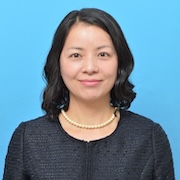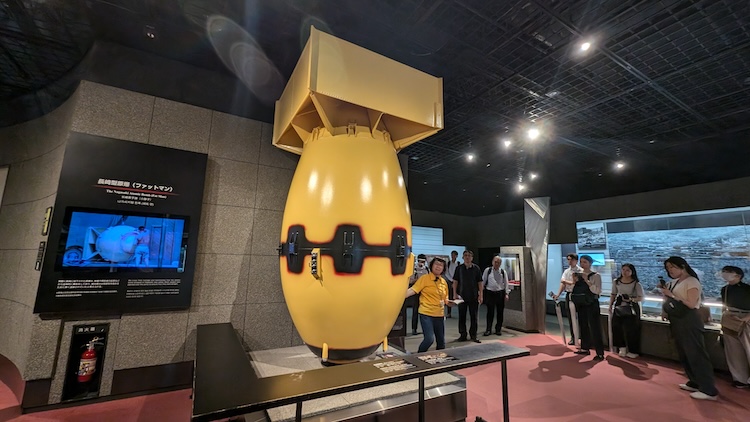By Chie Sunada
The writer is the Director of Disarmament and Human Rights at Soka Gakkai International.
TOKYO | 21 August 2024 (IDN) — This summer, Hironobu Maekawa, alongside his wife Hiroko, spoke for the first time about an experience from almost eight decades earlier. Just weeks after the August 6, 1945, atomic bombing of Hiroshima, his three-year-old sister, who had seemed uninjured, suddenly passed away. The family dug a hole to cremate her body. His five-year-old brother tearfully said, “Big brother, is she not hot?”

Those words remained seared in his memory to this day. A week later, that brother and a 16-year-old elder brother died after vomiting large amounts of blood. Since then, Maekawa has lived with the guilt of being the sole survivor. Now, after 79 years, he has decided to share this long-silenced experience in order to convey it to the young people in the hope that it will inspire them to work for peace.
Park Namjoo, a second-generation Korean Japanese woman, was exposed to the effects of the bomb at a distance of 1,900 meters from the hypocenter in Hiroshima. She was also drenched in black, radiation-laden rain. She witnessed people fleeing from the city center, skin hanging off from burns, crying out, “It’s so hot, so hot, please help me.” Many died while begging passersby for water. To this day, she regrets that she couldn’t give them any water.
Recently, when she heard President Putin say he wouldn’t rule out the use of nuclear weapons in the conflict with Ukraine, she found herself unable to sleep: how could he say such a thing knowing the cruel suffering that nuclear weapons produce.
Every August, there are opportunities to listen to the testimonies of such hibakusha, people who suffered from the atomic bombings in Hiroshima and Nagasaki. In the words of the hibakusha, we find the fundamental answer to why nuclear weapons must be abolished. “No one else should ever suffer what we did.”
The common wish of hibakusha
But does this sentiment—the common wish of hibakusha and in fact humanity—really reach the politicians and decision-makers? At the second session of the Preparatory Committee for the 2026 NPT Review Conference, which concluded earlier this month, nuclear-armed states continued to advocate for a security system that relies on nuclear weapons, stressing the importance of nuclear deterrence.
Japan is the only country to have suffered the wartime use of nuclear weapons, and Japanese Prime Minister Kishida declared his commitment to realizing a world without nuclear weapons during the recent Peace Memorial Ceremony in Hiroshima. At the same time, he argued in favor of strengthening extended deterrence, including the U.S. nuclear umbrella, stating this does not contradict the goal of nuclear abolition.
The nuclear discourse often centers on national security, but if these weapons are used anywhere on Earth, the damage would not be confined to any one country. In addition to the destruction from the blast and radiation, any use of nuclear weapons would cause long-term and widespread harm.
What scientists call nuclear winter and nuclear famine—the collapse of global food production that would result from the climatic changes provoked by nuclear detonations—means that no one on Earth would be unaffected by even a limited nuclear exchange. This is not just a future possibility. The damage from nuclear testing, exposure during uranium mining for nuclear weapons, and so on, continue to harm human bodies and result in environmental destruction.
TPNW instead of nuclear deterrence

It is claimed that nuclear deterrence is essential for national security, but the renewed nuclear arms race invites the question: Whose security is being protected, and at what cost? UN Secretary-General Guterres has rightly warned that nuclear weapons “offer no security, just carnage and chaos.”
So long as nuclear weapons exist, the risk that they will be used, whether through cyberattacks, accidents, or malevolence, remains. To protect humanity’s right to survival, the SGI firmly supports the Treaty on the Prohibition of Nuclear Weapons (TPNW) as a path for the complete abolition of nuclear weapons and, further, of war itself.
Given the current global situation in which countries are expanding and modernizing their nuclear arsenals, and there is growing risk of the use of nuclear weapons, the SGI has advocated for a commitment to No First Use of nuclear weapons as a means of risk reduction and confidence building.
On January 3, 2022, the leaders of the five states—China, France, Russia, the UK and the US—recognized under the Non-Proliferation Treaty (NPT) as possessing nuclear weapons, issued a joint statement “Preventing Nuclear War and Avoiding Arms Races.” The SGI calls on these states to pledge to abide by their January Joint Statement, and to take prompt measures to reduce the risks posed by nuclear weapons.
No First Use
As a first crucial step, we advocate that the nuclear states declare their commitment to the principle of No First Use (NFU)—the policy of never being the first to use nuclear weapons—as a matter of highest priority. NFU should further be universalized as the security policy of all states possessing nuclear weapons as well as the nuclear-dependent states.
The adoption of NFU pledges among nuclear-armed states by itself, could be instrumental in helping the world change course—away from nuclear buildup premised on deterrence. Taking this step would not only reduce global tensions and risks but would enable the international community to refocus on meeting the challenges, climate change prime among them, that can only be addressed through joint collaboration action.
As members of global civil society, the SGI will work for the establishment of NFU in collaboration with people around the world who yearn for the authentic peace of a world free from nuclear weapons. [IDN-InDepthNews]
Photo: The Atomic Bomb Dome and rose. The yellow rose in front is named “Hiroshima Heiwa Kinen Koen” (Hiroshima Peace Park). Credit: Chie Sunada


